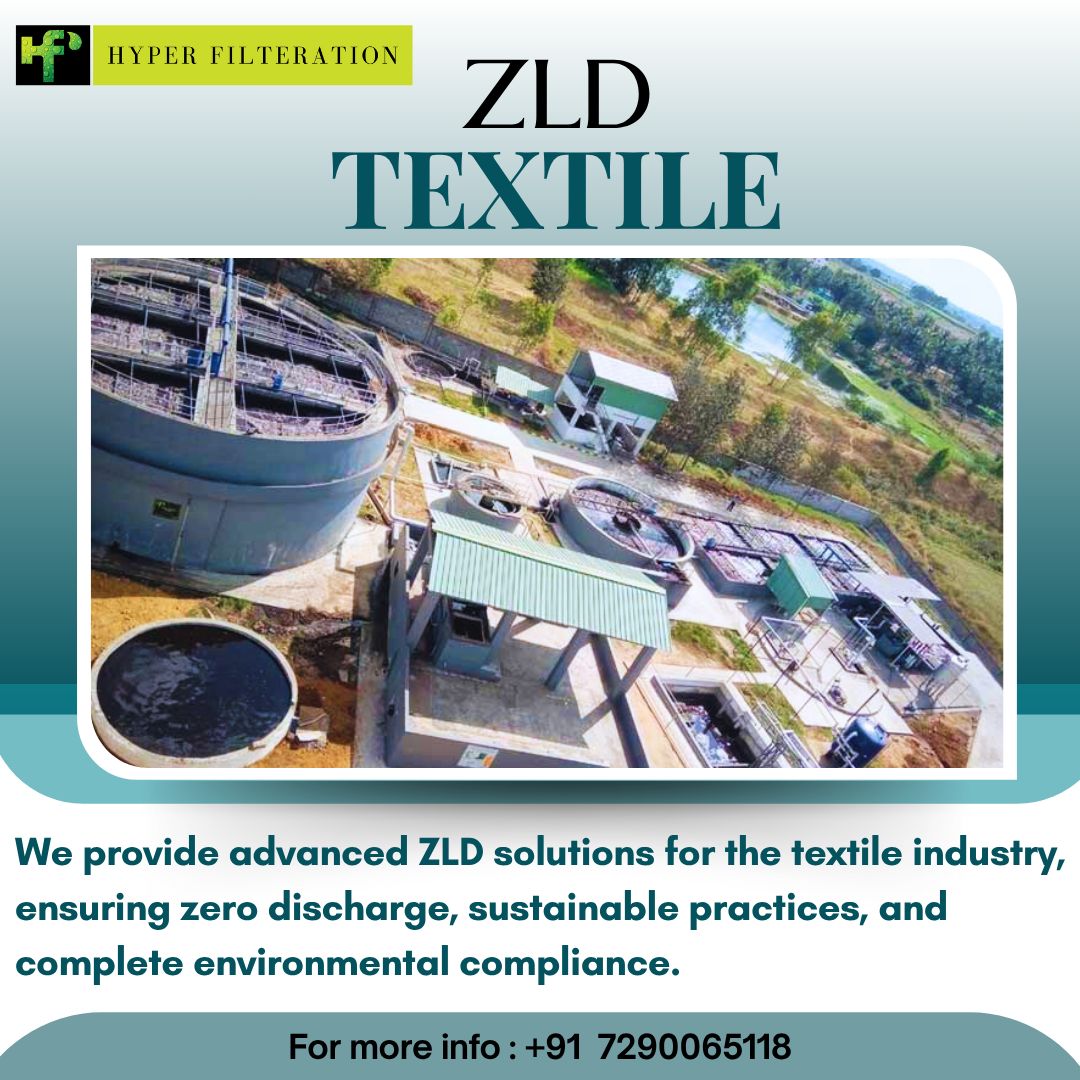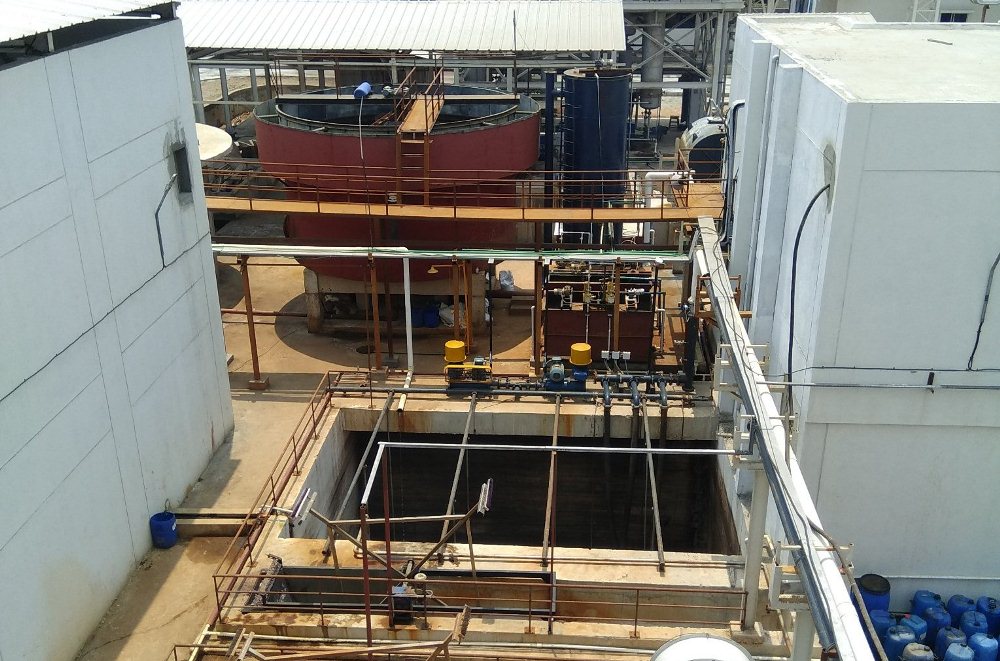Zero Liquid Discharge (ZLD) Plant: A Complete Guide | Waste Water Treatment | By Hyper Filteration

Strong 8k brings an ultra-HD IPTV experience to your living room and your pocket.
Introduction to ZLD Plant
In the era of increasing water scarcity and environmental regulations, industries are under pressure to treat and reuse wastewater efficiently. Zero Liquid Discharge (ZLD) is an advanced wastewater treatment process that ensures no liquid waste leaves the plant premises. A ZLD plant plays a crucial role in conserving water, minimizing environmental impact, and complying with pollution control norms.
In this article, we’ll explore what a ZLD plant is, how it works, its components, benefits, challenges, and why it's becoming a critical solution for industries today.
________________________________________
What is a ZLD Plant?
ZLD (Zero Liquid Discharge) is a treatment process designed to recover and reuse almost all wastewater, leaving behind only solid waste. The ultimate goal of a ZLD PLANT system is to eliminate wastewater discharge from an industrial facility, thereby achieving environmental compliance and resource recovery.
Why Is ZLD Important?
With growing environmental awareness and government regulations like CPCB (Central Pollution Control Board) guidelines, industries in sectors such as textile, pharmaceuticals, power plants, and chemicals are adopting ZLD to:
• Conserve water resources
• Reduce environmental pollution
• Meet regulatory compliance
• Lower dependency on freshwater
________________________________________
How Does a ZLD Plant Work?
H2: ZLD Plant Process Flow
The Zero Liquid Discharge process typically includes the following stages:
1. Pre-treatment
This involves removing suspended solids, oil, grease, and large contaminants using physical and chemical methods such as:
• Clarifiers
• Coagulation & flocculation
• Filtration units
2. Reverse Osmosis (RO)
RO is a membrane filtration process that separates dissolved salts and impurities. RO systems usually recover 95–97% of the water.
3. Evaporation and Crystallization
The RO reject water, which contains high concentrations of salts and toxins, is treated in:
• Evaporators to boil off and condense pure water.
• Crystallizers to form solid salt crystals from the remaining brine.
4. Solid Waste Management
The crystallized salts and sludge are collected and disposed of in an environmentally safe manner, often sent to authorized TSDF (Treatment, Storage, and Disposal Facilities).
________________________________________
Key Components of a ZLD Plant
H2: Major Equipment Used in ZLD Systems
ZLD plants consist of a combination of technologies and equipment. Here’s a breakdown:
H3: 1. Clarifier
Used in the pre-treatment stage to settle suspended solids.
H3: 2. Ultra Filtration (UF)
Removes fine particles and acts as a safeguard for RO membranes.
H3: 3. Reverse Osmosis (RO) Unit
Performs high-recovery filtration, separating clean water and concentrate.
H3: 4. Multiple Effect Evaporator (MEE)
Uses steam energy to evaporate water from RO reject while minimizing energy costs.
H3: 5. Crystallizer
Solidifies the leftover brine from evaporators into crystalline form.
H3: 6. Agitated Thin Film Dryer (ATFD)
Dries concentrated slurry into powder form, reducing sludge volume.
________________________________________
Industries That Require ZLD Systems
H2: Applications of ZLD Plants
Many water-intensive industries benefit from ZLD technology, including:
• Textile and Dyeing Units
To eliminate color, heavy metals, and TDS from effluents.
• Pharmaceutical & Chemical Plants
To prevent toxic wastewater discharge.
• Thermal Power Plants
For treatment of cooling tower blowdown and boiler wastewater.
• Food & Beverage Industry
To recycle process water and meet FSSAI norms.
• Leather Tanneries
To control chromium and salt pollution.
________________________________________
Benefits of a ZLD Plant
H2: Why Invest in ZLD?
ZLD may have a high upfront cost, but the long-term benefits make it a smart investment:
H3: 1. Environmental Compliance
Helps meet local, state, and international pollution norms.
H3: 2. Water Recovery
Over 95-98% of water is recovered and reused in the plant processes.
H3: 3. Cost Savings
Reduces dependency on freshwater and groundwater, leading to savings in water procurement.
H3: 4. Brand Reputation
Demonstrates commitment to sustainability and environmental stewardship.
H3: 5. Waste Minimization
Solid waste is easier to manage, store, and dispose of than liquid waste.
________________________________________
Challenges in ZLD Implementation
H2: Limitations of ZLD Systems
While ZLD offers numerous advantages, there are certain challenges:
• High Capital Investment
Initial setup costs are high due to advanced equipment and automation.
• Energy Intensive
Evaporators and dryers consume large amounts of power.
• Skilled Operation
Requires trained manpower for continuous monitoring and maintenance.
• Sludge Disposal
Even though it's solid, waste disposal must follow strict norms.
________________________________________
Future of ZLD in India and Globally
H2: Trends in Zero Liquid Discharge
As water stress and environmental concerns continue to rise, the demand for Zero Liquid Discharge technology is expected to grow significantly. Indian states like Tamil Nadu and Gujarat already mandate ZLD for specific industries, and other regions are likely to follow suit.
H3: Innovation in ZLD
Companies are now focusing on:
• Energy-efficient evaporators
• Hybrid ZLD solutions
• AI and automation for monitoring and optimization
________________________________________
Conclusion
H2: ZLD Plant – A Step Towards a Sustainable Future
In conclusion, a Zero Liquid Discharge (ZLD) plant is not just an environmental obligation but a strategic business decision. With water becoming an increasingly scarce resource, industries must adopt sustainable practices like ZLD to remain competitive and responsible.
Implementing a ZLD system allows companies to recycle wastewater, comply with regulations, and contribute to a greener and cleaner planet. Though the road may be challenging, the rewards—in terms of water savings, cost efficiency, and corporate sustainability—are immense.
Note: IndiBlogHub features both user-submitted and editorial content. We do not verify third-party contributions. Read our Disclaimer and Privacy Policyfor details.



